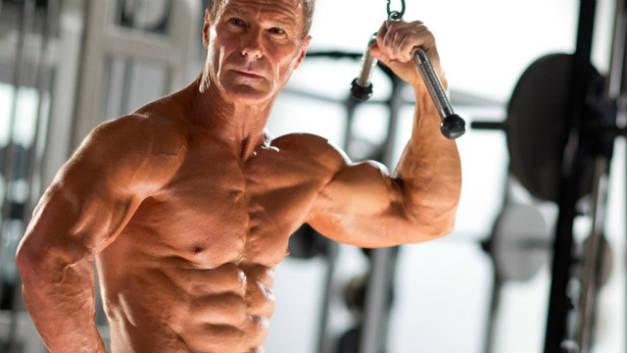Table of Contents
Aging And Muscle Loss
One of the most important aspects of keeping ourselves healthy as we age is ensuring that we keep ourselves active. Most importantly, keeping our muscle mass as dense as we can will help ensure that we are able to continue to engage in physical activity as we get older. Everyone wants to reverse aging!
Unfortunately, aging decreases muscle mass. As we get older we lose more and more of our muscle capacity and density. Inactivity especially wreaks havoc on our musculature. The saying ‘use it or lose it’ definitely applies to our muscles.
If over time you fail to maintain an active lifestyle in which your muscles are worked, you will eventually suffer from lowered physical capacity. You lose muscles as you age and as such you also lose your capacity to lose fat faster. Because muscle mass is associated with the ability to lose weight or maintain a slim physique, the more muscle we lose the more difficult it is to keep the weight off.
Decreased Muscle Mass and Aging
Decreased muscle mass thus comes with aging and with it the correlate of a lowered metabolism. A lowered metabolic rate means that it is more and more difficult to keep calories from turning into excess fat.
The bottom line is therefore that engaging in a regular strength training regime is key to successfully overcoming the symptoms of aging. If you want to reverse aging gracefully you need to keep sweating a little each day. Keeping your body active is the only way to make sure that you are able to meet the physical demands of everyday life as you age. If you want to be one of those glowing and active seniors, you need to start now.
Strength Training to Target Major Muscle Groups
Begin with a simple strength training routine that targets the major muscle groups. Alternate between working your lower body at one session (quads, thighs, butt, calves) and the upper body the next (including, arms, back and shoulders). Abdominal exercises and those that target core strength should also be included at least once a week. These will ensure that your back is strong and healthy.
Eating well and keeping up a regular fitness routine will ensure that your body keeps pace as you try to reverse aging. While you may not be bopping to your old dance favorites into your senior years, you will be able to enjoy some of your other favorite activities like playing with your grandchildren or keeping your garden in full bloom.
Improve Workout Recovery Because Muscles Grow When You Are Resting
Want to get the most out of your workout? Then put your weights away, hang-up your running shoes, empty the pool and take the wheels off your bike. Get a book, a movie, a hammock or an armchair, sit down and just relax. Forget about increasing your heart rate or getting a sweat on. Don’t even think about it. Just’relax.
Rest is as important a component of a strong workout routine as any other, yet it is often not scheduled in and is often not considered an exercise at all. Many people feel guilty about taking time off, but as Owen Anderson of Peak Performance Magazine put it, not getting enough rest ” can destroy your ability to produce top performances.
Doing too much hard training can devastate your muscles, harass your hormonal system, and implode your immune system.’ And all just because you didn’t want to take the day off. This will not help reverse aging.
Finding Balance
To be sure, finding the right balance of rest and work is no easy task. Some take the ‘trial-and-error’ method, which is to push oneself as far as possible and then take time off. While this method might appear to work for some, it is an approach worth being cautious about.
Muscles need more time than we think to repair, and although it may feel as though your body is ready for another assault, it may be that the proteins you’ve been eating are still yet to be fully absorbed and the muscles aren’t ready. According to an article produced by Real Muscle Online, ‘Muscles grow when you are resting. If your goal is to gain muscle mass then you should avoid re-working a muscle that is sore because it is a sign it is still growing.
Relaxing and Stretching
So relax. Stretching is also a good idea. If you are bent on being active everyday, and can’t stand to be idle, then spend time stretching your entire body. Take the time you normally devote to a workout and slowly go through a routine of stretches. Doing this will increase blood flow to the ‘damaged’ muscles, and increase your heart rate.
Many personal trainers advice is to give muscles at least 36 hours of rest before targeting them again. As evidenced in an experiment conducted by McMaster University in Hamilton Ontario, muscle reparation, ‘is pretty much over [after 36 hours].’
So relax. Sit down. Get some fluids in you and let the body do its thing. You’ll be gaining more by doing less.

